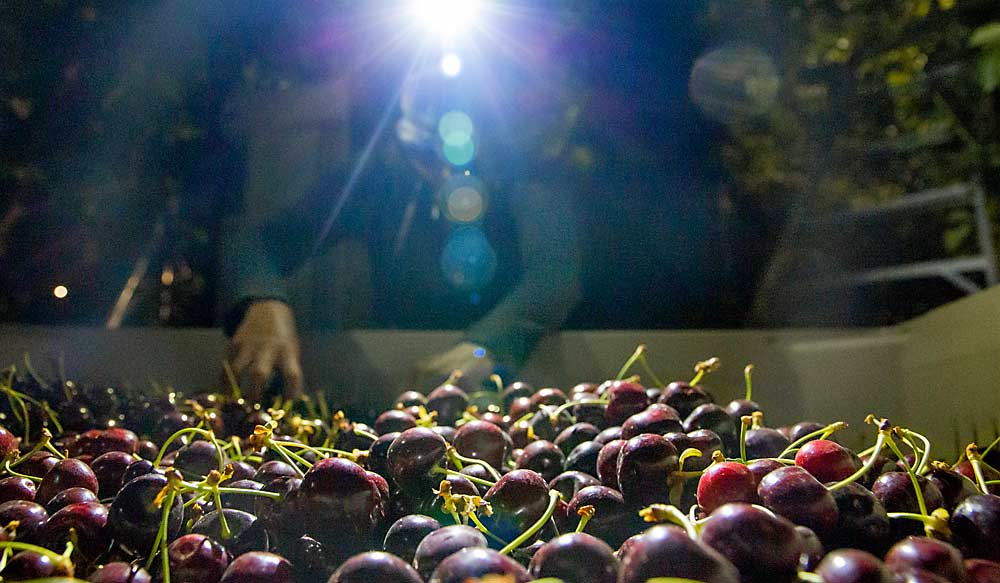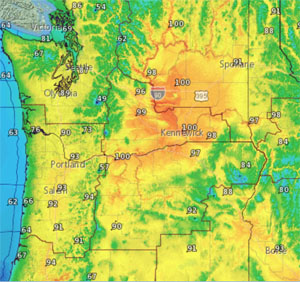
Cherry growers in the Pacific Northwest are racing to beat a record-setting heat wave, many of them harvesting in the dead of night.
More than a week of triple-digit temperatures that reached their peak with 115 degrees forecast for June 29 took its toll on workers and the fruit. The region is under an excessive heat warning that began June 25 and is scheduled to end July 4.
Workers at G2 Orchards near Mattawa, Washington, requested the shift to nighttime hours, said owner Dale Goldy. Even when crews started at dawn, the days quickly turned too hot and cut their shifts short.
“It’s not safe for them and they’re not getting any hours,” Goldy said.
Goldy and his managers equipped more than 200 employees with individual headlamps and placed rented construction floodlights in the rows to begin a picking shift at 1 a.m. Tuesday in a Skeena block.
Meanwhile, growers are hustling to get fruit off the trees before it becomes too soft to market.
The heat may force growers to leave some fruit on the trees, though how much is so far unclear.
“I think there’s going to be cherries in this window that just don’t get picked,” said B.J. Thurlby, president of the Northwest Cherry Growers, an industry trade group based in Yakima, Washington.
Later varieties may fare better. Cherries stop cell division and ripening during extreme heat but can resume their maturity once the weather cools. The heat wave may just push harvest back with no ill effects on quality, Thurlby said.
That happened in 2017, when the region sustained a week or so of triple-digit weather in July, Thurlby said. Though 2017 was a marginal year overall, the later varieties picked after the heat wave ended up with good quality, he said.
Yakima Valley grower Keith Veselka said his crews were wrapping up harvest this week by 9:30 a.m., because the cherries are too soft after that time. He expects to lose some fruit, but the question in his mind is whether the later varieties recover from the heat stress that has, at this point, stalled fruit growth.
“We’ve just never had 115 degrees before,” he said. “But your nighttime temps are the tell: At 80 degrees, there’s no chance (for the trees) to recover.”
—by Ross Courtney







Leave A Comment